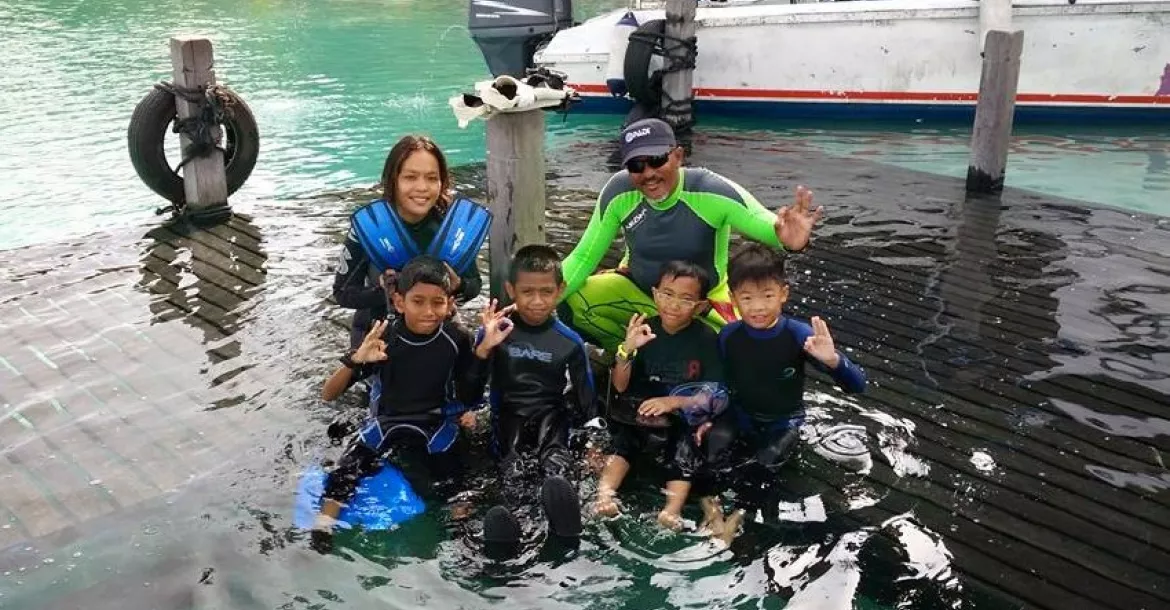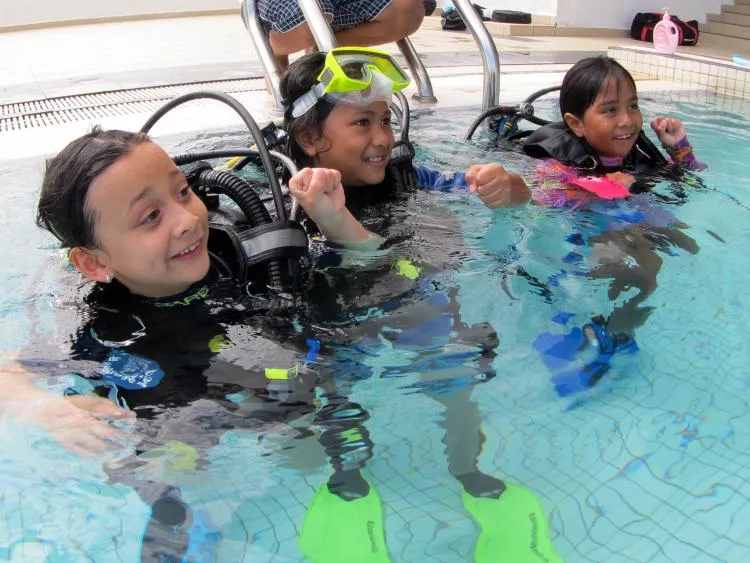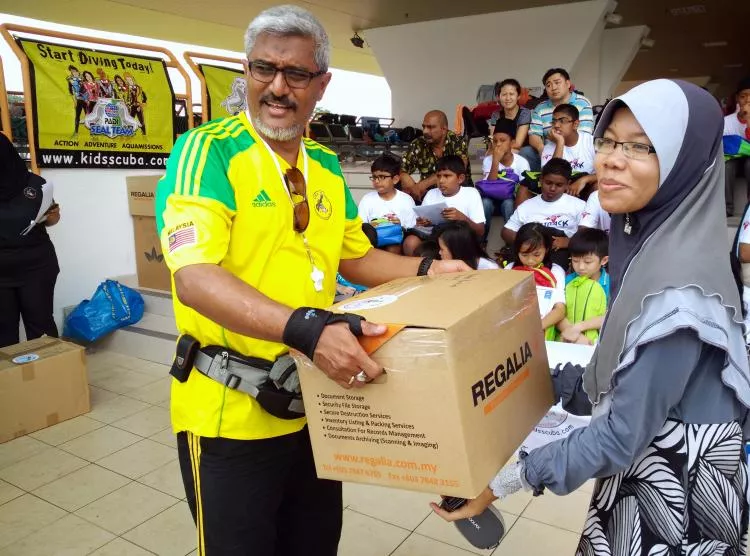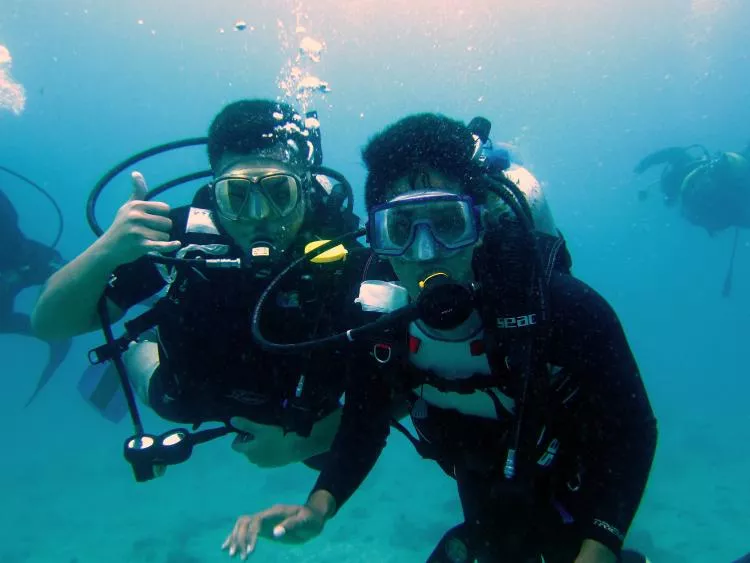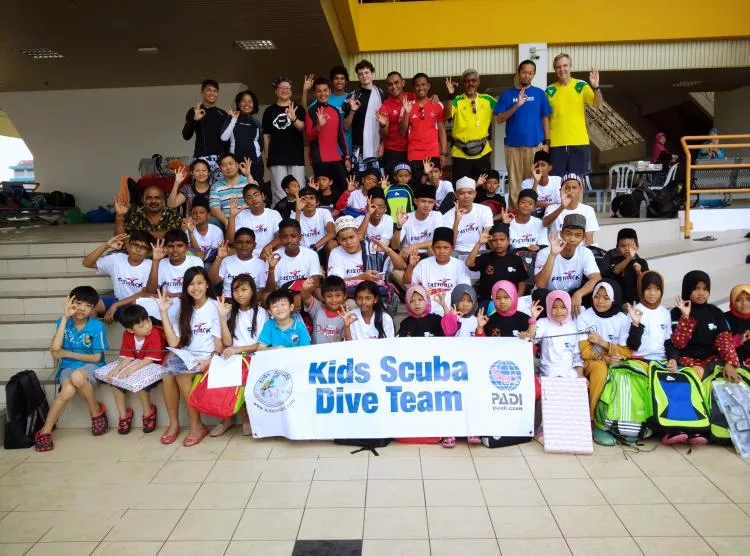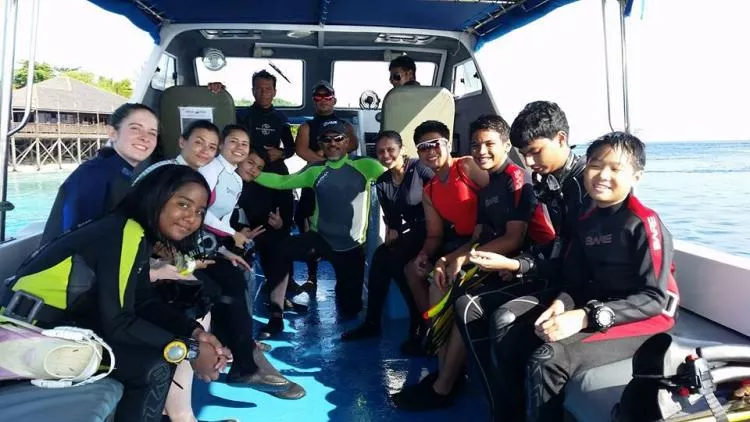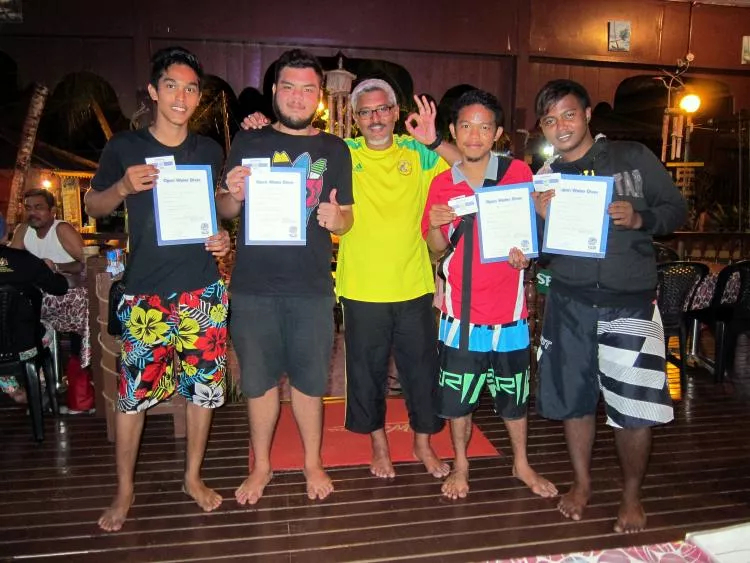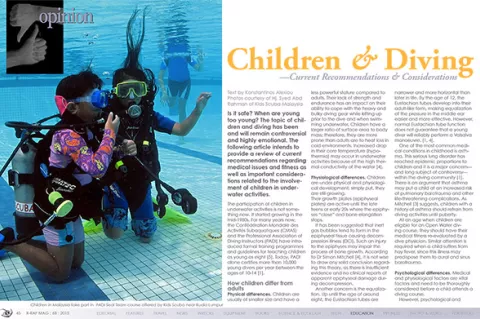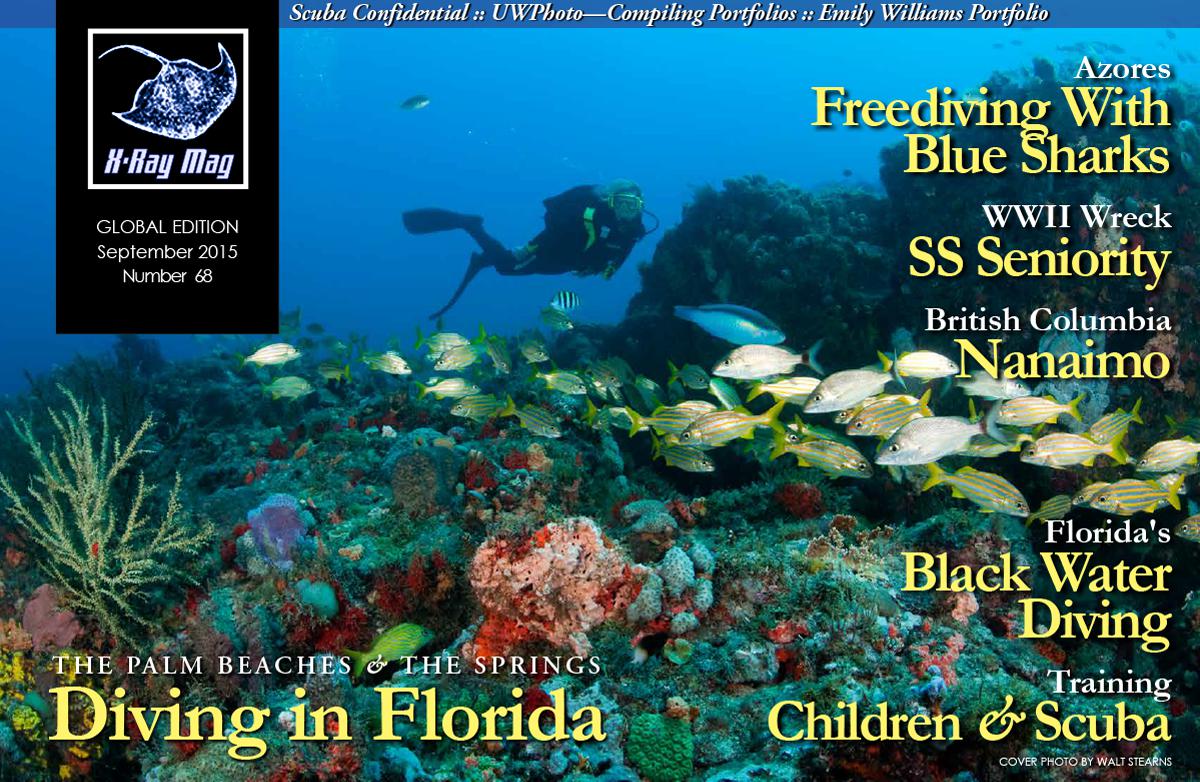Is it safe? When are young too young? The topic of children and diving has been and will remain controversial and highly emotional. The following article intends to provide a review of current recommendations regarding medical issues and fitness as well as important considerations related to the involvement of children in underwater activities.
Contributed by
Factfile
REFERENCES
[1] Brylske A: The Next Generation: What you Need to Know About Kid Divers. In: The Complete Diver: The History, Science and Practice of Scuba Diving. Dive Training LLC, United States, 2012. p. 155-161.
[2] Caruso JL, Uguccioni DM, Ellis JE, Dovenbarger JA, Bennett PB. Diving fatalities involving children and adolescents: 1989-2002. Undersea and Hyperb Med. 2004; 31(3): 329.
[3] Cvitanovich A, Langton P: Children and diving: a paediatric perspective. SPUMS J 2003; 33: 74-75.
[4] Mitchell S: Children in diving: how young is too young? SPUMS J 2003; 33: 81-83.
[5] Richardson D: Children and diving: the recreational-diving training perspective. SPUMS J 2003; 33: 83-89.
[6] Vandenhoven G, Collard F, Schamp E: Children and diving: medical aspects. Eight years’ sports medical follow-up of the first scuba diving club for children in Belgium. SPUMS J 2003; 33: 70-73.
[7] DAN Medical Staff: Young Divers. http://www.danap.org/DAN_diving_safety/DAN_Doc/pdfs/young2.pdf [Accessed 02/06/2015]
The participation of children in underwater activities is not something new. It started growing in the mid-1980s. For many years now, the Confédération Mondiale des Activités Subaquatiques (CMAS) and the Professional Association of Diving Instructors (PADI) have introduced formal training programmes and guidelines for teaching children as young as eight [5]. Today, PADI alone certifies more than 10,000 young divers per year between the ages of 10-14 [1].
How children differ from adults
Physical differences. Children are usually of smaller size and have a less powerful stature compared to adults. Their lack of strength and endurance has an impact on their ability to cope with the heavy and bulky diving gear while kitting up prior to the dive and when swimming underwater. Children have a larger ratio of surface area to body mass; therefore, they are more prone than adults are to heat loss in cold environments. Increased drop in their core temperature (hypothermia) may occur in underwater activities because of the high thermal conductivity of the water [4].
Physiological differences. Children are under physical and physiological development; simply put, they are still growing. Their growth plates (epiphyseal plates) are active until the late teens or early 20s where the epiphyses “close” and bone elongation stops.
It has been suggested that inert gas bubbles tend to form in the epiphyseal tissue causing decompression illness (DCI). Such an injury to the epiphyses may impair the process of bone growth. According to Dr Simon Mitchell [4], it is not wise to draw any solid conclusion regarding this theory, as there is insufficient evidence and no clinical reports of apparent epiphyseal damage during decompression.
Another concern is the equalization. Up until the age of around eight, the Eustachian tubes are narrower and more horizontal than later in life. By the age of 12, the Eustachian tubes develop into their adult-like form, making equalization of the pressure in the middle ear easier and more effective. However, normal Eustachian tube function does not guarantee that a young diver will reliably perform a Valsalva manoeuvre. [1, 4].
One of the most common medical conditions in childhood is asthma. This serious lung disorder has reached epidemic proportions to children and it is a major concern—and long subject of controversy—within the diving community [1]. There is an argument that asthma may put a child at an increased risk of pulmonary barotrauma and other life-threatening complications. As Mitchell [3] suggests, children with a history of asthma should refrain from diving activities until puberty.
At an age when children are eligible for an Open Water diving course, they should have their medical fitness re-evaluated by a dive physician. Similar attention is required when a child suffers from hay fever, since this illness may predispose them to aural and sinus barotrauma.
Psychological differences. Medical and physiological factors are vital factors and need to be thoroughly considered before a child attends a diving course.
However, psychological and behavioral issues are also important. They determine how a child will learn and gain skills, as well as the quality of their social interaction and emotional development. Sometimes, physical growth does not equate with emotional maturity. Psycho-social and cognitive factors need to be accessed during the child’s dive training process [3].
Medical statement
Divers Alert Network (DAN) conducted a search of 4,600 biomedical journals going back to 1966 in an attempt to locate studies on how the physiological differences between adults and otherwise healthy children alter the child’s capability and risks associated with diving. The Medline database revealed no papers dealing with this issue. Therefore, DAN concluded, “any recommendations made would be based on theoretical considerations taking into account what is known about normal growth and development, and the empirical evidence that exists where children younger than 12 have scuba dived”.
Main issues to be addressed by DAN [7] are:
• Evidence of increased incidence of Patent Foramen Ovale (PFO) in children: One study was made on the age distribution of PFO. They found an increased incidence of PFO in the 10- to 20-year-old group compared to other groups. However, this incidence was based only on six cases (three with existing PFO) out of a total of 705 cases.
• Susceptibility to oxygen toxicity: Clinical experience suggests no particular difference in susceptibility of children down to age eight to either pulmonary or Central Nervous System (CNS) oxygen toxicity.
• Epiphyseal damage due to DCI: There is no published evidence suggesting that the physis, or growth plate in bones, is more susceptible to decompression sickness (DCS) in children compared to adults. Depth and time restrictions should be imposed by training organizations to increase safety.
• Susceptibility to pulmonary barotrauma: Children at the age of eight or younger are at a theoretical increased risk of pulmonary barotrauma, because their pulmonary alveoli are still multiplying, pulmonary elasticity is increased, and chest wall compliance increased. It is strongly recommended that children younger than eight should not scuba dive.
• Are children more likely to have an asthma episode while diving? Cold conditions, physical exertion, salt-water aspiration, and panic due to an asthma attack when underwater are risk factors. However, there is no sufficient evidence to accept or reject these hypotheses.
• Susceptibility to ear barotrauma: Due to the physiological characteristics of the Eustachian tubes in children (see above), ear infections and barotraumas are common in diving based on a study conducted by Dr Guy Vandenhoven [6].
• Exposure to cold environment: As previously noted, children will cool faster in the water. They should not become hypothermic underwater. Proper thermal protection and hydration before, during and after diving minimize the likelihood of hypothermia.
• Susceptibility to venous gas emboli (VGE) and DCS: No published data on the post-dive VGE incidence and DCS occurrence in children compared to adults is available. In addition, if children get DCS, the severity level of their injury compared to adults has not been ascertained. Depth and time restrictions should be introduced by training organizations to enhance safety.
• Physical ability to cope with emergencies: As mentioned before, children have less strength and stamina than adults do. In addition, they present with characteristic behavioral responses, including evidence of anxiety or panic. However, appropriate human factor studies have not been carried out.
Epidemiology of diving incidents/accidents in youths
DAN collected data on 1,248 diving fatalities for the years 1989-2002. Twenty-four (1.9 percent) deaths involved divers 17 years of age or younger (range 10-17). Every case was determined to be an accidental death. Drowning and/or air embolism was the cause of death in the vast majority of mishaps. It is important to note that several of the young divers lacked formal diving training and many died while performing a high-risk dive profile. Most of these deaths were accidental in nature and theoretically could be avoidable if diving was conducted safely [2].
CMAS has run youth diving programs for years and now has records of close to a million exposures without serious injury. In addition, PADI issued 122,298 Junior Open Water (JOW) certifications between 1988 and 1998, and is aware of only one fatal accident involving a JOW diver [4].
Finally, Vandenhoven [6] et al., conducted a study of 234 children divers (ages 6-13) with a follow-up of eight years. They did not record any significant incident in 2,216 dives in the sea and recorded only one case of hypoxic syncope during breath-hold diving and some other minor otolaryngological issues during the course and the dives, all with complete recovery.
Conclusion
Children’s physical, physiological, pathophysiological and psychological characteristics influence their performance during diving. In light of this fact, children should not be considered as small adults. It is essential that education and training must be focused and adapted to the individual child. As the number of children below the age of 12 increases, more empirical and clinical data will be gathered and our understanding of children’s capacity during diving will further increase.
Children and scuba diving is a controversial topic where there is no absolute truth. This magnifies even more the need that parents, doctors and diving instructors show common sense and extreme caution. ■

